
I am very excited about the next few posts on Italy, as I will be taking you with me to Sicily. You see, I was born in Milan (in the north of Italy), but my family comes from the beautiful island of Sicily and being away from Italy made me realise how much I owe to this place and how much I actually miss it. It is a huge part of who I am and it plays a major role in the food I cook. So let’s start and let me show you around the biggest and most important Sicilian city with my Palermo Guide.
Palermo is my father’s home town and I used to spend a part of my summer holidays there every year. We would stay at my grandparents’ house and enjoy all the amazing things the city has to offer. My grandparents used to live near a big market called “Il Capo” and the best part of the day for me was our daily morning walk to the market where we would buy the food for the day. Palermo is very famous for its amazing street food and the local markets are the perfect place to experience it. More about it later.
During our trip, we visited Palermo over 2 days. We were staying in the seaside village of San Vito Lo Capo (a guide on that will follow), so we drove there in the morning and left in the evening. As we did not have a lot of time, we only visited the main attractions and showed the girls a few key areas of the city.
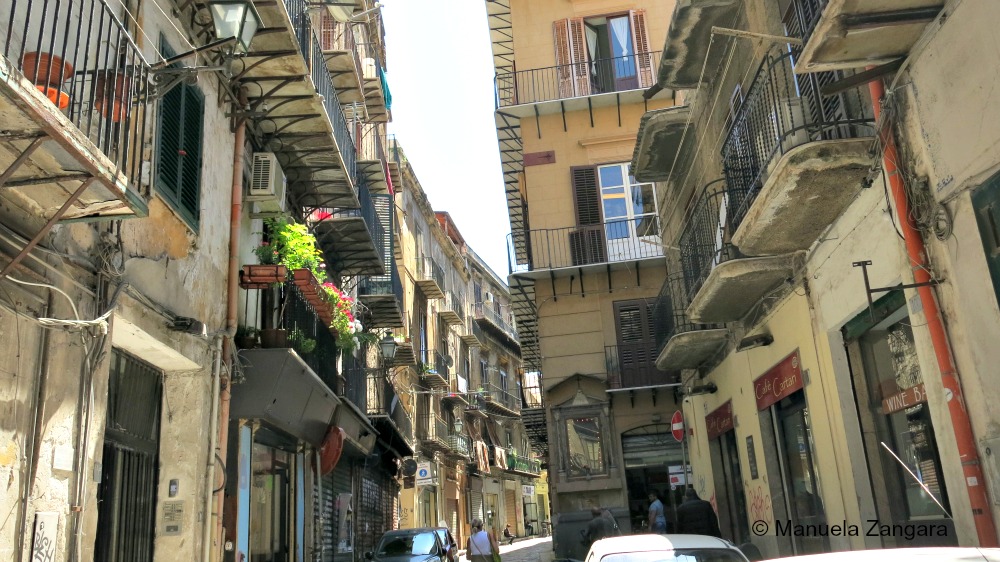
Before getting into the details of what to see and do, let me give you a brief historical background, as I think it is fundamental to understand this city better. This is how Wikipedia briefly describes Palermo’s history: “The city was founded in 734 BC by the Phoenicians as Ziz (‘flower’). Palermo then became a possession of Carthage, before becoming part of the Roman Republic, the Roman Empire and eventually part of the Byzantine Empire, for over a thousand years. The Greeks named the city Panormus meaning ‘complete port’. From 831 to 1072 the city was under Arab rule during the Emirate of Sicily when the city first became a capital. The Arabs corrupted the Greek name into Balarm, the root for Palermo’s present-day name. Following the Norman reconquest, Palermo became the capital of a new kingdom (from 1130 to 1816), the Kingdom of Sicily and the capital of the Holy Roman Empire under Frederick II Holy Roman Emperor and Conrad IV of Germany, King of the Romans. Eventually Sicily would be united with the Kingdom of Naples to form the Kingdom of the Two Sicilies until the Italian unification of 1860.” See what I mean? All these influences are still visible in the architecture, culture, language and food of the city!

SIGHTSEEING
We started off our day with a visit to one of Palermo’s famous markets: Ballarò. Palermo is famous for its markets that are reminiscent of the Arab history of the city… they do remind me of the souks you find in Arab/North African countries. We visited Ballarò, which is mainly a food market and it is considered a foodie’s heaven.
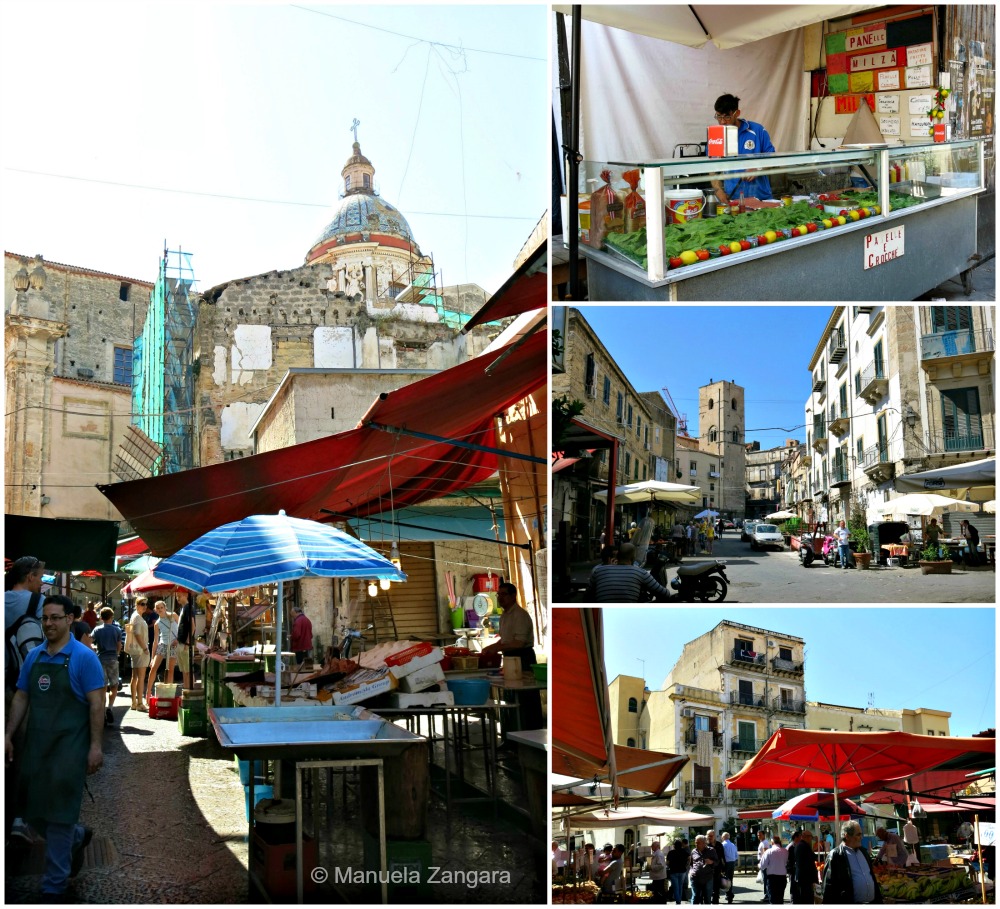

Other important markets include Il Capo and La Vucciria, probably the most famous of all. In the local dialect, Vucciria means “voices” or “noise” as all the vendors shout to attract customers. All markets are open Monday through Saturday from around dawn until 2 pm, but try and get there early to see all the action.
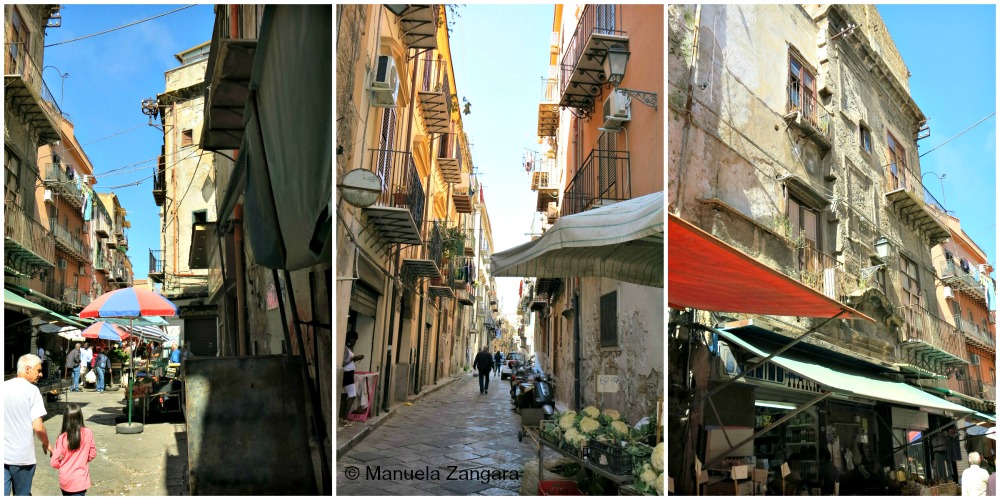
After the market, we passed through the old Jewish area of town and we visited Via dei Calderai. This is a very interesting place to visit and something that you may not find on your tourist guide. It is the area where blacksmiths still work and sell their products.
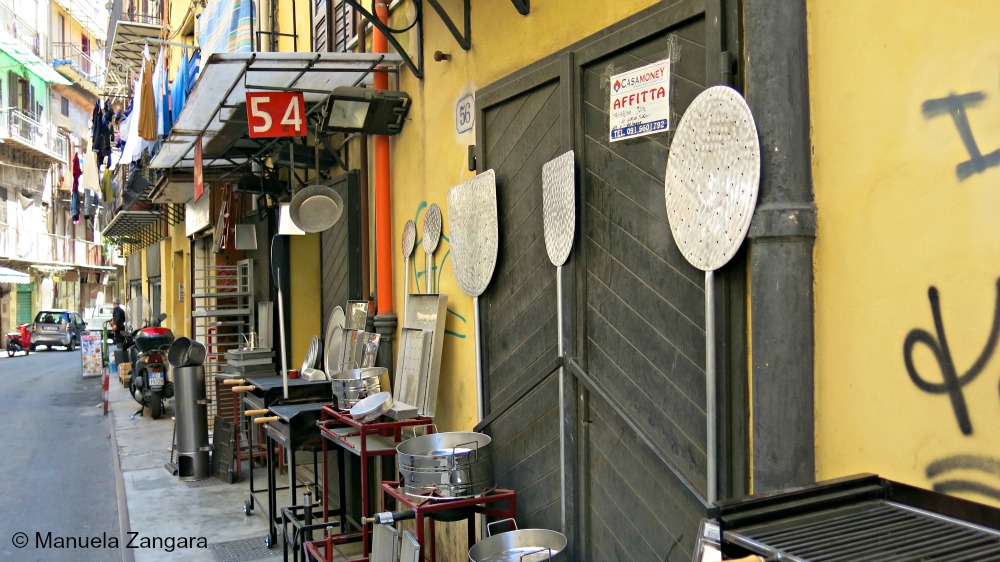
They make all sorts of things, including pots and kitchen utensils. If you want to buy the tin to make Cassata Siciliana or Cannoli tubes, this is the place to go!

Then we walked around until we arrived in Piazza Bellini to visit the churches of San Cataldo (the one with the domes, famous for its Arab-Norman architecture) and Santa Maria dell’Ammiraglio (also known as Martorana).
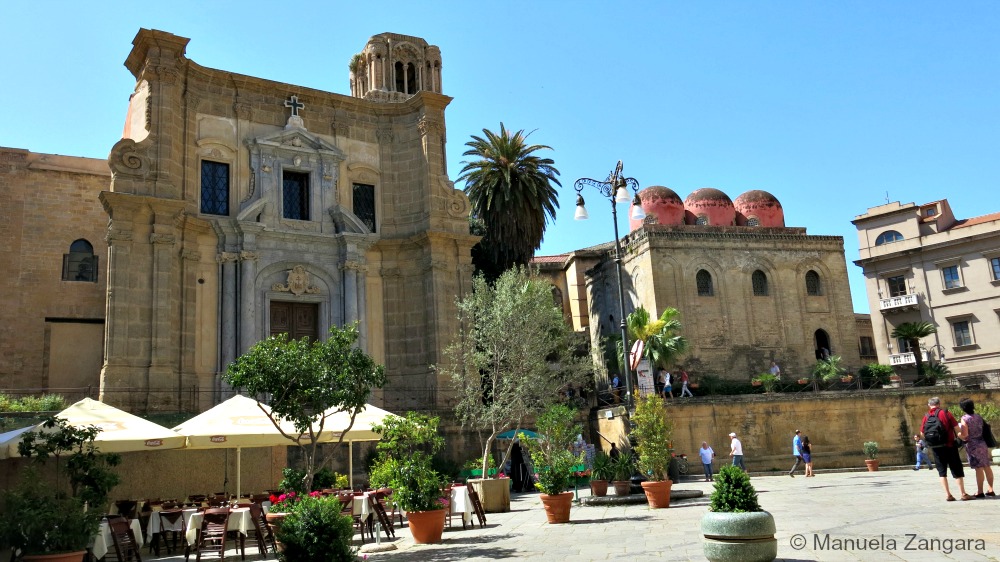

The latter belongs to the Eparchy of Piana degli Albanesi of the Italo-Albanian Catholic Church, a diocese who officiate the liturgy according to the Byzantine Rite in the ancient Greek language. The church is renowned for its spectacular interior, which is dominated by a series of 12th century mosaics executed by Byzantine craftsmen.

Then we went to see the Pretoria Fountain which is situated in front of the city’s town hall.
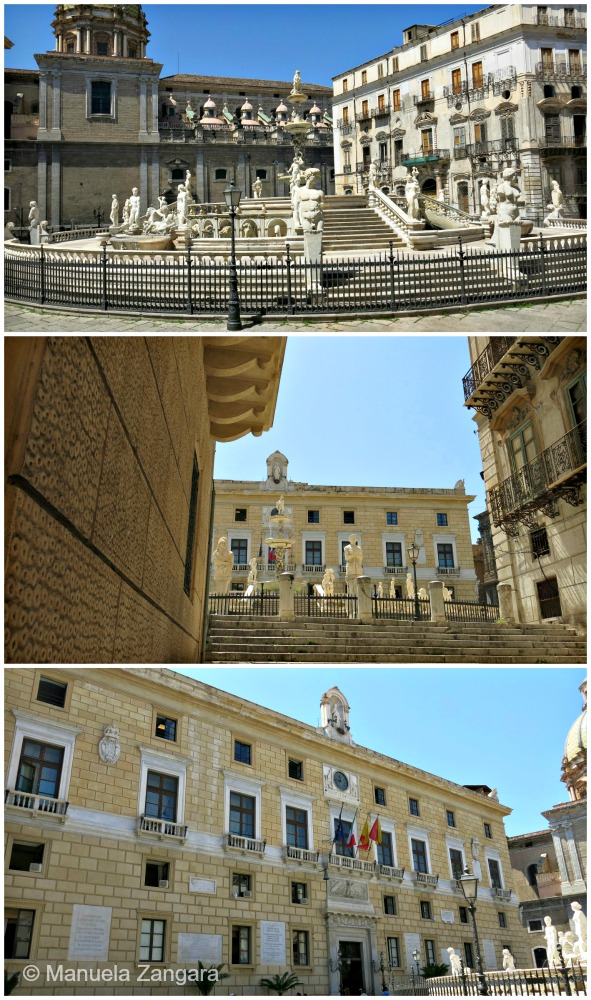
This is a magnificent fountain and it is also known as the “Shameful fountain” because all the statues are nude.

The next place we visited was the baroque Quattro Canti (4 corners) square. It is the intersection of two of the main city streets and each corner has a building with statues of its 4 patron saints: Agata, Ninfa, Oliva and Cristina.
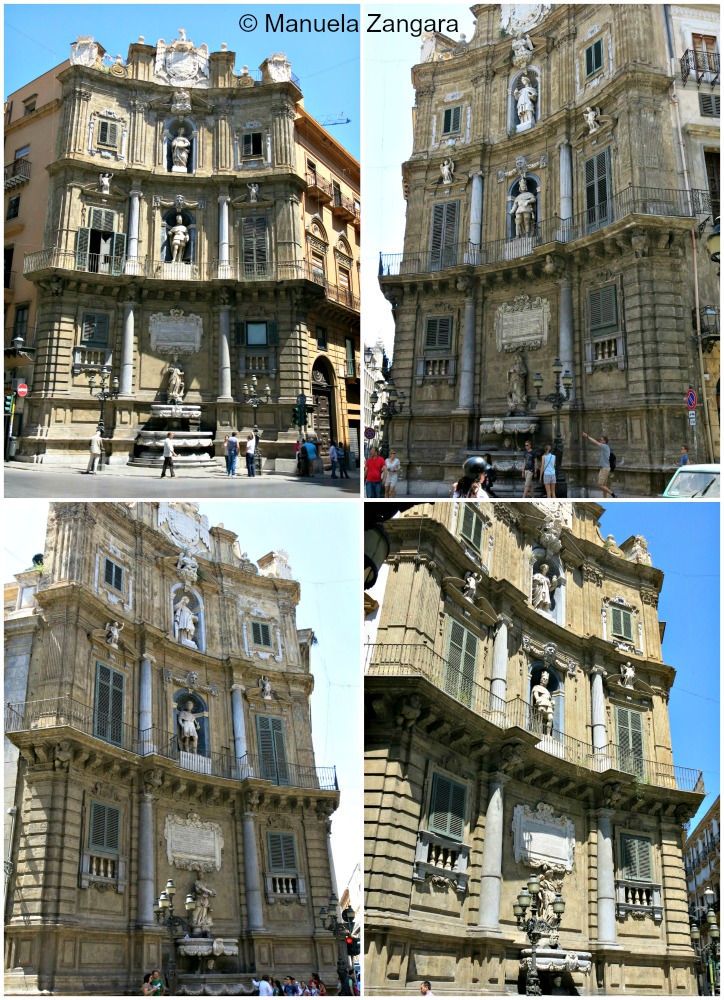
We finished off our day excursion with a visit to the little town of Monreale, on the slope of Mount Caputo, overlooking Palermo and the very fertile valley called “La Conca d’oro” (the Golden Shell), famous for its orange, olive and almond trees.

The Cathedral of Monreale is one of the greatest examples of Norman architecture in the world. It contains a splendid cloister and impressive glass mosaics.

The half dome of the central apse has a colossal figure of Christ, with a seated Virgin and Child below, the other apses have full-length figures of St Peter and St Paul.

The subjects in the nave depict scenes from the Old Testament and the New Testament. The design, execution and choice of subjects all appear to be of Byzantine origin.

From the Arab inspired gardens of the Cathedral you have an impressive view of the city. That evening, the sky was so clear that we could see the Aeolian islands from there!!

I love this place and I used to come here as a child… it’s so peaceful!


Then we got back into our rented Fiat500 and went back to San Vito lo Capo.

We just stopped briefly in the town of Castellammare del Golfo for a quick panoramic pit-stop.

The second day, we visited the Cathedral which is characterized by the presence of different styles, due to a long history of restorations. It was even transformed into a mosque during the Saracen rule! The Cathedral also contains the tombs of important kings, including Frederick II, the Holy Roman Emperor. He was called “stupor mundi” (the wonder of the world), and the first European by Nietzsche. Frederick was an avid patron of science and the arts and he played a major role in promoting literature and in what was to become the modern Italian language.

Then we saw Palazzo dei Normanni, the seat of the Kings of Sicily during the Norman domination. Today it is the seat of the regional parliament of Sicily. The building is the oldest royal residence in Europe. It contains the famous Cappella Palatina, the best example of the Arab-Norman-Byzantine style of the 12th century. There are wonderful mosaics and it’s a site not to be missed!
Another example of Arab-Norman architecture is the nearby church of San Giovanni degli Eremiti. Look at the beautiful red domes!

After a stroll along the central streets, we stopped for a couple of photos: Teatro Massimo and Teatro Politeama.
Then we went to visit La Zisa Castle, another great example of Arab-Norman architecture.

It was originally built for king William I of Sicily, as summer residence for the Norman kings. The Zisa is clearly inspired by Moorish architecture and if you have been to Granada, you would see how similar it looks to the Alhambra. The name Zisa itself derives from the Arab term al-Azīz, meaning “dear” or “splendid”.

My family’s history has very strong ties to this place, as my ancestors owned La Zisa from the 17th century, when Giovanni of Sandoval and Platamone (Marquis of S. Giovanni la Mendola and Prince of Castelreale, originally from the Royal House of León, in Spain) bought it. The latter’s (and my family’s) marble coat of arms with two lions can be seen over the entrance fornix.

From 1808 to the 1950’s the building was used as residence by the princes Notarbartolo di Sciara – heirs of the Sandoval family (my grandmother, a Notarbartolo by birth, was born here). The castle was then acquired by the Region of Sicilia and restored. The Zisa is today opened to the public.

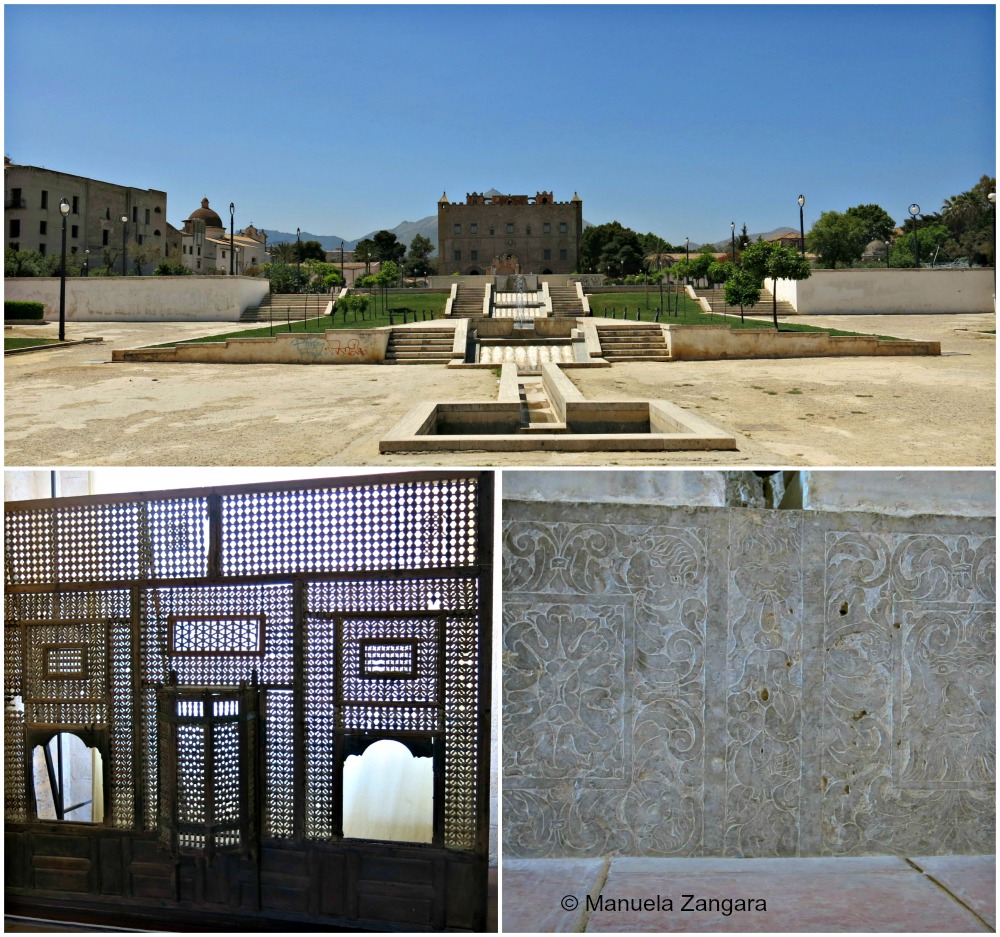
Here is a family photo of the castle taken in the 1800’s.

And this is my grandmother’s grandfather Francesco Paolo Notarbartolo.
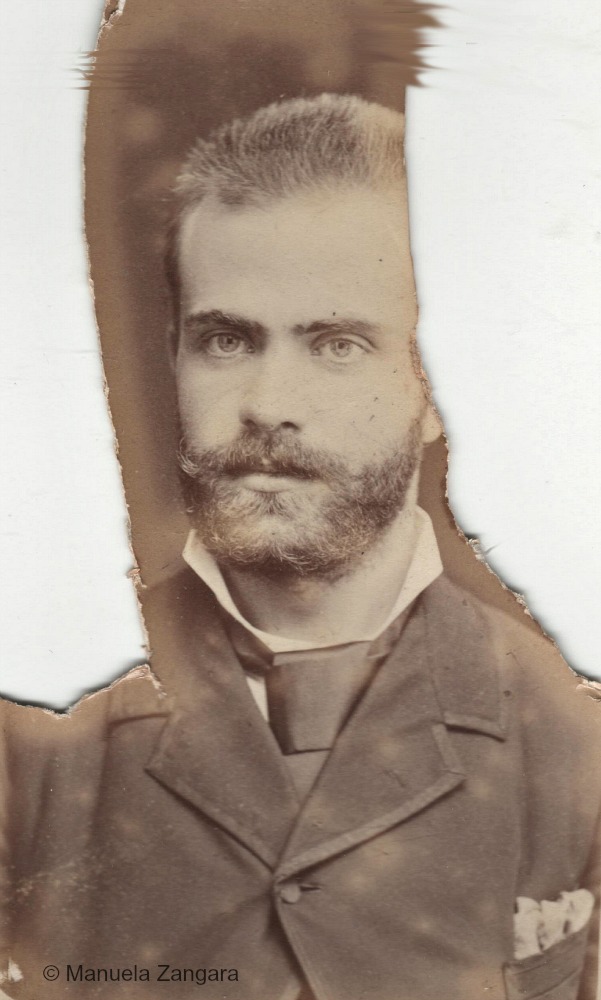
This is him again with his wife.

This is my grandmother’s grandmother with my grandmother’s father, Filippo.

It felt a bit strange to visit the place where my grandmother was born and see it from an “outsider” point of view…
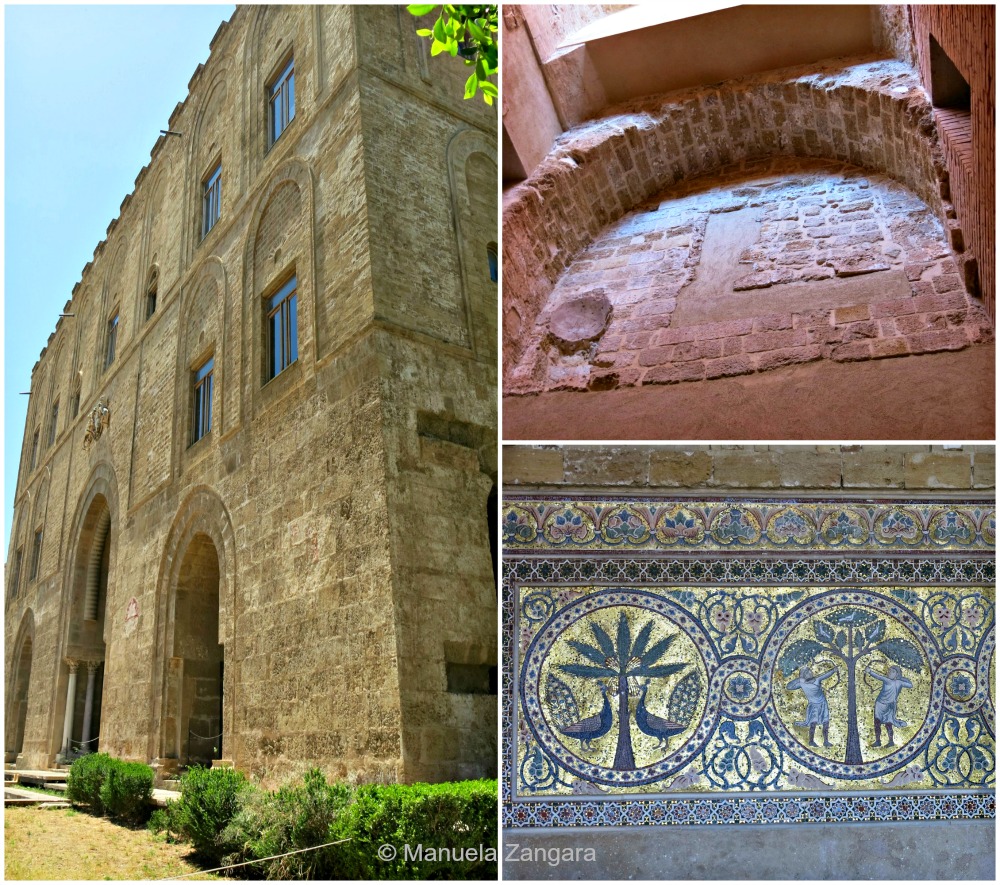
I love Moresque architecture and this visit was an amazing (and emotional) experience. Can you believe that they even had an “air conditioning” system?? It worked by circulating cold water inside the walls! How ingenious!

The most notable room is the central hall, with a mosaic decoration; once it had a fountain too, from which the water flowed outside.

Since July 2015 La Zisa is a UNESCO World Heritage site.

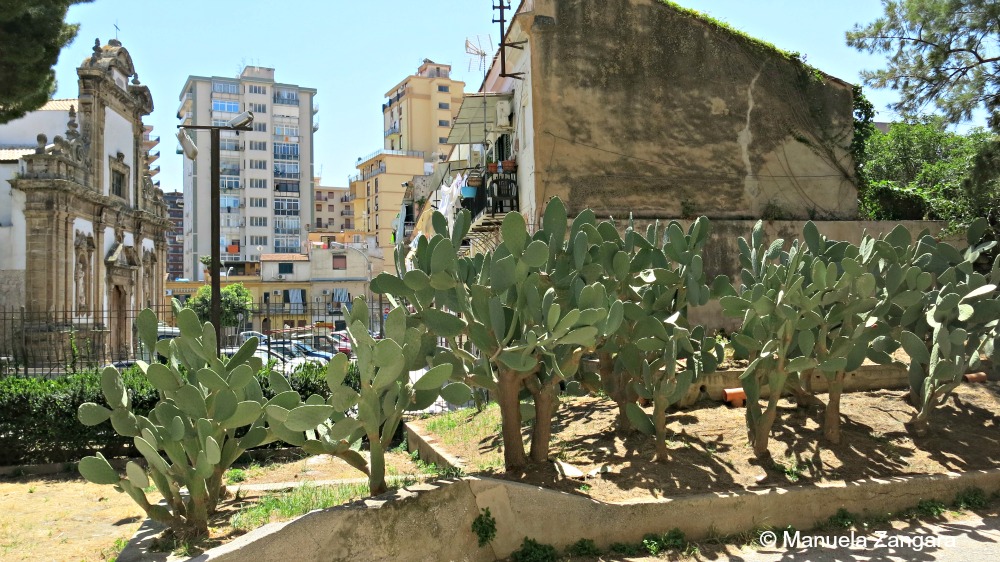
If you have some spare time, I suggest you visit the nearby town of Mondello. There is a very beautiful beach and the sea is fantastic!
Another interesting site is the Capuchin Catacombs, with many mummified corpses in varying degrees of preservation. I used to love it as a child, but it is quite creepy.
Close to the city is the 600 m-high Monte Pellegrino, offering a panorama of the city, its surrounding mountains and the sea. It also houses the remains of the most important patron saint of the city: Santa Rosalia.
FOOD
Palermo is the famous throughout Italy for its amazing food, particularly its street food. As you know, I often feature Sicilian recipes on the blog, as this is an important part of who I am. Dishes like Arancine, Panelle, Anelletti, Cannoli, Cassata, Sfincione… they all come from here.

As I wrote above, Sicilian history is quite special and all the different people who ruled the island left something behind. All these different influences (Greek, Spanish, French and Arab) can be easily seen in the local food. I will write a more detailed post about Sicilian food and all the amazing things we ate during our stay, so stay tuned!
RESOURCES ON MSM
SOME RECIPES FROM THE REGION OF SICILY:
STREET FOOD
Arancine
Panelle
Cazzilli/Crocche’ di patate
Rascature
Ravazzate
Spiedini
Crostini
Sfincione
Ham and Cheese Sicilian Brioches
PASTA
Spaghetti with home-made Tomato Sauce
Pasta con i Broccoli Arriminati
Baked Anelletti
Sedanini with Swordfish and Eggplant
Busiati with Pesto Trapanese and Fried Eggplant
Pasta con le Sarde alla Palermitana
Busiati with Herbs, Pistachios and Zucchini
OTHER MAINS
Beef Agglassato
Sarde a Beccafico
Gatto’ di Patate
Baked Swordfish Involtini
Eggplant Involtini
Fish Couscous
Pork Involtini alla Palermitana
Home-made Sicilian Pork Sausage with Fennel
Falsomagro
APPETISERS, SIDES & DRINKS
Sicilian Almond Milk
Bruschetta with Matarocco
Olive Schiacciate
Caponata
Cabbuci
Sweet and Sour Pumpkin
Eggplant Patties
DESSERTS
Cannoli
Cassata Siciliana
Buccellato
Martorana
Cassatelle Trapanesi
Biancomangiare with Citrus Salad
Cubbaita
Pesche Dolci alla Siciliana
Almond Cookies
Fig Cookies
Coffee Granita
Almond Parfait
Gelo di Melone
Genovesi
Browse through all my Sicilian recipes here.
TRAVEL IN ITALY:
Venice Guide – Italy
Milan Guide – Italy
Rome Guide – Italy
RESTAURANT REVIEWS – ITALY:
Nonna Betta – Rome
Da Enzo al 29 – Rome
Da Bucatino – Rome

HOW TO GET AROUND IN PALERMO
The best way to get around Palermo is on foot! All the main attractions are in the centre, so I suggest you find a central accommodation and move around on foot.
HOW TO GET THERE
By Plane
Falcone-Borsellino Airport is at Punta Raisi, 30km west of Palermo on the A29 motorway. There are regular flights between Palermo and most mainland Italian cities. Some international connections are also available.
You can get to the city centre by bus (35 to 50 minutes, depending on traffic) or by train (Trinacria Express – 45 minutes to 1¼ hours). On the way to Palermo from the airport, you will pass from Capaci, the site of one of the biggest mafia massacres. In 1992, judge Giovanni Falcone was killed here by a bomb. Today you can see a monument that is dedicated to him and the people who died with him that day.

There is a taxi rank outside the arrivals hall and the set fare to/from central Palermo is €45, and all the major car-hire companies are represented at the airport.
By Train
Regular services leave from Palermo Centrale train station to other Sicilian cities. There are also Intercity trains to Reggio di Calabria, Naples, Rome and Milan.
By Sea
From Palermo’s port, Grandi Navi Veloci runs ferries to Civitavecchia, Genoa, Naples and Tunis; Tirrenia goes to Cagliari and Naples; Grimaldi Lines goes to Salerno.
By Car
Palermo is accessible on the A20-E90 toll road from Messina, and from Catania (A19-E932) via Enna. Trapani and Marsala are also easily accessible from Palermo by motorway (A29), while Agrigento and Palermo are linked by the SS121/189, a good state road through the interior of the island.

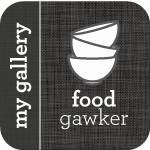
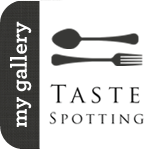

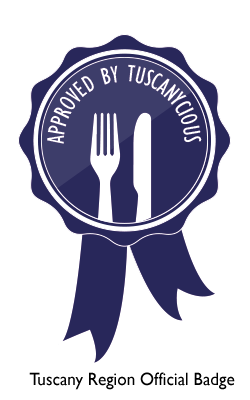












Leave a Reply